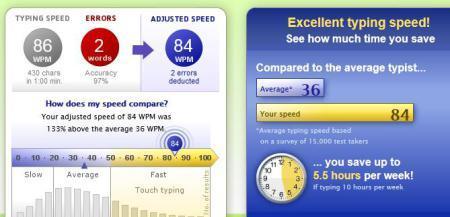Touch-typing
As writers, we spend a lot of time hacking away on our keyboard. Every writer has her or his own way of doing that.
Some touch-type without looking down to find the correct keys. You place eight fingers on the “home row” (asdf jkl; on an English QWERTY keyboard) and reach for the other keys from that position. Over time, the correct movements become part of muscle memory.
Touch-typing allows you to type without conscious attention and frees you to focus on writing (the ideas) instead of typing (the physical process of moving your fingers).
Most people I know—even people who spend a lot of time writing on the computer—no longer learned how to touch-type. Instead, many writers develop their own hunt-and-peck method. Some type just with two fingers and search every key by sight; others type blindly using two to six fingers but don’t place their fingers on the home keys.
The home-key method is the fastest and most efficient, though. People who use touch-typing are on average two times faster than people who use other methods. According to Wikipedia, average professional typists type 50-80 words per minute (wpm), while super-fast typists achieve 100 or more. In comparison, hunt-and-peck typists normally type 20-50 words per minute.
Touch-typing is also more accurate and produces fewer mistakes.
Personally, I use the touch-typing method. I can’t imagine writing any other way. When I was in school, I took a typing class, then promptly forgot everything I learned because I never used those skills again. But once I started writing on a computer, I rediscovered touch-typing. It’s the only way to keep up with the speed of my thoughts and let the words “flow” directly onto the page.
There are several websites that let you test your typing speed, for example TypingTest.com. Take a minute and try it. It’s fun. Let us know your test results and your typing method in the comments.
Filed under: Jae's writing process Tagged: hunt-and-peck method, touch-typing












